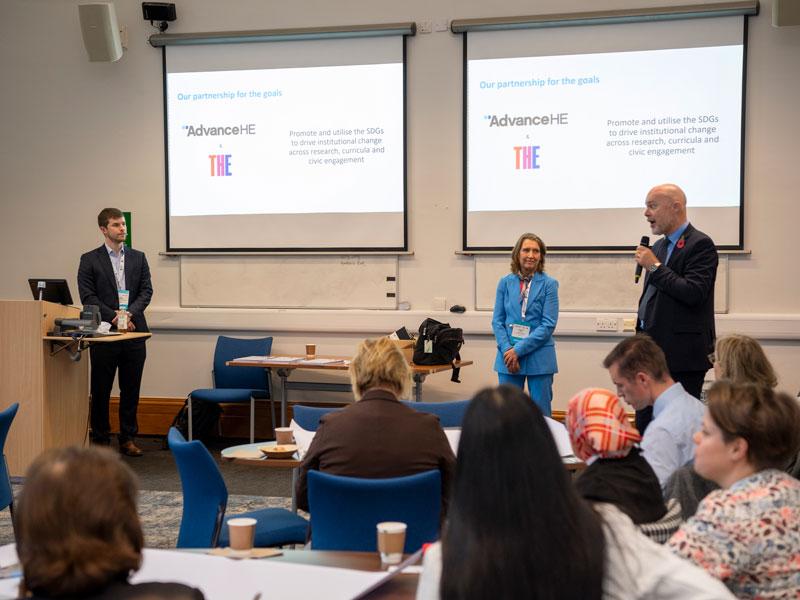Universities that align their transformation strategy to the UN’s Sustainable Development Goals (SDGs) can demonstrate research impact and community engagement while attracting a climate-conscious generation of students.
Mark Tweddle, director of consultancy at Times Higher Education, recalls a comment from Dawn Freshwater, vice-chancellor at the University of Auckland, that explains the benefits of tying institutional strategy to the SDGs. Freshwater says this approach helps universities switch mindset from “not trying to be the best in the world, but being the best for the world”.
THE’s Impact Rankings, which assess universities against the SDGs, also show a university’s sustainability credentials to prospective students. A THE survey of prospective international students found that 82 per cent of respondents said it was “important for them to live their lives in a way that is consistent with being a sustainable citizen”. For 7 per cent of respondents, a university’s “commitment to, and reputation for, sustainability” was the most important factor in deciding which universities to apply to.
“I know universities have found the SDGs really useful as a way to help them communicate what it is that they do in a language and a framework that shows how they’re addressing the key challenges of our time,” Tweddle says. “That helps you having conversations with audiences, beyond just students and parents, but also with government entities.”
Institutions should take a “holistic approach” to the 17 SDGs to reflect the diverse areas they cover, says Kay Hack, lead consultant for education at Advance HE. “Understandably, universities will focus on the goals that address their key research interests in terms of output. But I think in terms of their overarching strategy, they need to take a joined-up approach,” she says.
“A lot of universities have a central purpose statement that might include sustainability. It’s how that gets embedded in the teaching and learning strategy, the research strategy, the civic engagement strategy, the outreach strategy [that’s important]. And making sure that everything has a reporting line in it, so all teams are coming back to the central question of, ‘are we making progress against the SDGs?’”
Aligning institutional strategy with the SDGs can aid universities’ civic engagement, enabling opportunities for outreach with local communities and beyond to explain and show impact. Institutions can effectively engage with local businesses to co-design research projects, work together on sustainable solutions and, more broadly, be a role model for sustainable practice within the community.
Collaborating with industry and other universities is essential to collectively investigate solutions to global challenges, Hack says. “Some of the most effective ways that I’ve seen in the learning and teaching spaces is where you have two cohorts of students studying the same discipline – they might both be doing health science – one in the UK and one in the Global South,” she says.
“They can come together and say, ‘we are doing a vaccine rollout. How do we do it? What does it look like here? What does it look like there? What are the challenges?’ Having realistic and authentic learning experiences working on big sustainability challenges together can be incredibly effective.”
Find out more about how Advance HE and Times Higher Education Consultancy are supporting institutions with their sustainable transformation strategy.


comment